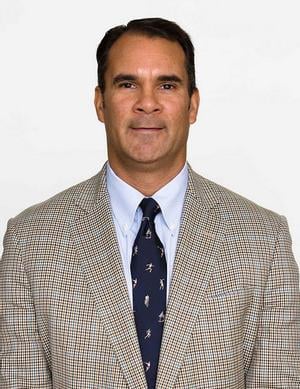
This week’s guest post comes from University of San Francisco Associate Athletic Director of Athletic Performance, Doug Padron. Before joining the Dons, Doug worked as an Athletic Trainer in stints at Monmouth University, Villanova University and Michigan State.
As a player and now an administrator, how have your expectations of a training program and the coach/trainer changed throughout your professional career? As a collegiate athletic trainer for the past 20 years my expectations for the athletic performance sciences have risen dramatically. When I started out, I viewed what we do in sports medicine as reactionary and not completely in sync with sport coaching staffs and strength & conditioning personnel. I have learned a great deal in my time on the job and now see all of us working closely together to reach common goals of wellness and performance, which results in success in competition.
What factor (certain movement, personality trait, environment, etc.) of a coach/trainer do you value the most? The ability to collaborate and professionalism are critical. Far too often, I have witnessed ego get in the way of collaboration. As an athletic trainer, I’m well aware of the value of a strength & conditioning coach. Unfortunately many in athletic administration do not see the importance of talented personnel in that area. I believe this creates an animosity towards others in an athletic department, which results in S&C coaches feeling as if they constantly have to prove themselves. This often creates problems within S&C staffs as well. Also critical is professionalism, which I have found is one reason S&C Coaches are not valued by, or do not advance into athletic, administration. The best ones collaborate well while maintaining a professional environment for student-athletes to train. All of these reasons are why I am such an advocate for SpartaTrac. It permits the S&C Coach the opportunity to share their work in a clear and concise format which is easily understood by sport coaches and athletic administrators.
What has been the most positive experience in this area? My current experience at the University of San Francisco. We have a true performance team approach. We work hand in hand to train the mind, body and soul or Cura Personalis as we refer to it on the Hilltop— Latin for “Care for the entire person.”
What factor of a coach/trainer frustrates you the most? Ego! There is no place for it when our goal is wellness for the student-athlete. Check it at the door or find a different field of work!
How have you seen the field of performance and injury prevention change over the last 10 years? We have moved far away from being reactionary. Everything we do is about prevention, which promotes recovery and performance. This focus has significantly reduced injuries at USF. Our medical costs have plummeted over the last 3 years; as a result our athletic insurance premium renewal decreased to the tune of 5 figures. We have a 20-1 ratio of student-athletes to ATCs so our ability to identify and treat soreness as opposed to injury has a significant impact on recovery and prevention. Additionally, we have a 30-1 student-athlete to Strength and Conditioning Coach ratio. This gives us the ability to create personalized programming for the Dons. Throw in a registered dietitian, mental performance coach and a great relationship with sport coaches and we truly have created a safe environment for our student-athlete to participate.
Where do you see the field of performance and injury prevention’s opportunities for growth? I am a big advocate of analytics. Whether it is biomechanical analysis or RPE, I believe there is great value in acquiring relevant performance information in order to learn more about our sports and student-athletes so we may best keep them well. I have also been a believer in the force plate technology and patented analysis that Sparta has created. I am excited to add that to our already strong repertoire.